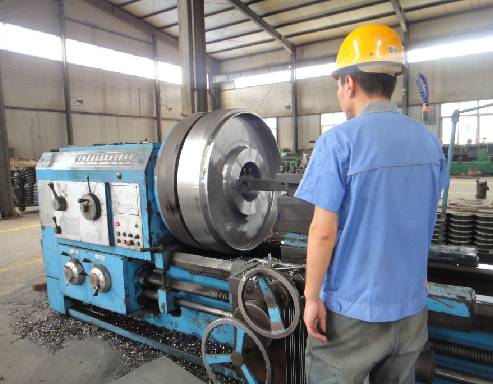 Afrikaans
Afrikaans  Albanian
Albanian  Amharic
Amharic  Arabic
Arabic  Armenian
Armenian  Azerbaijani
Azerbaijani  Basque
Basque  Belarusian
Belarusian  Bengali
Bengali  Bosnian
Bosnian  Bulgarian
Bulgarian  Catalan
Catalan  Cebuano
Cebuano  Corsican
Corsican  Croatian
Croatian  Czech
Czech  Danish
Danish  Dutch
Dutch  English
English  Esperanto
Esperanto  Estonian
Estonian  Finnish
Finnish  French
French  Frisian
Frisian  Galician
Galician  Georgian
Georgian  German
German  Greek
Greek  Gujarati
Gujarati  Haitian Creole
Haitian Creole  hausa
hausa  hawaiian
hawaiian  Hebrew
Hebrew  Hindi
Hindi  Miao
Miao  Hungarian
Hungarian  Icelandic
Icelandic  igbo
igbo  Indonesian
Indonesian  irish
irish  Italian
Italian  Japanese
Japanese  Javanese
Javanese  Kannada
Kannada  kazakh
kazakh  Khmer
Khmer  Rwandese
Rwandese  Korean
Korean  Kurdish
Kurdish  Kyrgyz
Kyrgyz  Lao
Lao  Latin
Latin  Latvian
Latvian  Lithuanian
Lithuanian  Luxembourgish
Luxembourgish  Macedonian
Macedonian  Malgashi
Malgashi  Malay
Malay  Malayalam
Malayalam  Maltese
Maltese  Maori
Maori  Marathi
Marathi  Mongolian
Mongolian  Myanmar
Myanmar  Nepali
Nepali  Norwegian
Norwegian  Norwegian
Norwegian  Occitan
Occitan  Pashto
Pashto  Persian
Persian  Polish
Polish  Portuguese
Portuguese  Punjabi
Punjabi  Romanian
Romanian  Russian
Russian  Samoan
Samoan  Scottish Gaelic
Scottish Gaelic  Serbian
Serbian  Sesotho
Sesotho  Shona
Shona  Sindhi
Sindhi  Sinhala
Sinhala  Slovak
Slovak  Slovenian
Slovenian  Somali
Somali  Spanish
Spanish  Sundanese
Sundanese  Swahili
Swahili  Swedish
Swedish  Tagalog
Tagalog  Tajik
Tajik  Tamil
Tamil  Tatar
Tatar  Telugu
Telugu  Thai
Thai  Turkish
Turkish  Turkmen
Turkmen  Ukrainian
Ukrainian  Urdu
Urdu  Uighur
Uighur  Uzbek
Uzbek  Vietnamese
Vietnamese  Welsh
Welsh  Bantu
Bantu  Yiddish
Yiddish  Yoruba
Yoruba  Zulu
Zulu idler roller types
Understanding Idler Roller Types A Comprehensive Overview
Idler rollers are essential components in various industrial applications, particularly in conveyor systems. They serve the primary function of supporting and guiding the conveyor belt, ensuring smooth movement of materials across different operations. Understanding the different types of idler rollers is crucial for selecting the right type for specific applications, improving efficiency, and reducing operational costs. This article delves into the common types of idler rollers, their features, and their applications.
1. Impact Idler Rollers
Impact idler rollers are designed to absorb shock and reduce the wear and tear on the conveyor belt, particularly when heavy materials are being loaded onto the system. Typically located at loading zones, these rollers are equipped with rubber or urethane sleeves that cushion the incoming material. This design helps prevent damage to both the belt and the idler itself, extending the operational lifespan of the conveyor system.
2. Return Idler Rollers
Return idler rollers, as the name suggests, are mounted on the return side of the belt. They support the belt as it returns to the loading point and help maintain proper belt tension. These rollers are typically constructed from robust materials to handle the weight of the belt and any residual load. Their primary function is to keep the belt aligned, which is crucial for maintaining the efficiency of the conveyor system.
Training idler rollers are used to control the tracking of the conveyor belt. Misalignment can lead to excessive wear, material spillage, and increased maintenance needs. Training idlers are typically installed in pairs, angled slightly to guide the belt back into its correct path. They play a critical role in ensuring that the conveyor operates efficiently and that materials are transported without interruption.
idler roller types

4. Self-Aligning Idler Rollers
Self-aligning idler rollers are a variant of training rollers that automatically adjust their position in response to belt misalignment. These rollers are fitted with a special mechanism or design that allows them to pivot or rotate, guiding the belt back to its intended path without manual intervention. Such rollers are especially beneficial in applications where belt misalignment is frequent, thus reducing maintenance costs and downtime.
5. Rubber Coated Idler Rollers
Rubber-coated idler rollers are designed to increase grip and reduce slippage of the conveyor belt. The rubber coating enhances friction between the roller and the belt, improving traction and overall movement efficiency. These rollers are particularly useful in applications involving steep inclines or where the material being transported is dusty or granulated, as they provide better control over the material flow.
6. Drive Rollers
Although not strictly categorized as idlers, drive rollers can be found in many conveyor systems and are essential for the movement of the belt. These rollers are powered by motors and are responsible for driving the conveyor belt forward. They usually have a different design and configuration compared to standard idler rollers and are crucial for determining the overall speed and performance of the conveyor system.
Conclusion
Choosing the right type of idler roller is paramount for the efficiency and longevity of conveyor systems. Each type serves a unique purpose, whether it’s mitigating impact, aligning the belt, or enhancing traction. By understanding the various idler roller types and their applications, businesses can improve operational effectiveness, reduce maintenance costs, and ensure smooth material handling. As industries continue to evolve, so too will the design and functionality of idler rollers, further enhancing their crucial role in conveyor systems.
-
Taper Centering Idler Set for Conveyor SystemsNewsJun.25,2025
-
Small Idler Rollers for Industrial ConveyorsNewsJun.25,2025
-
Guide Training Idler Set for Conveyor MaintenanceNewsJun.25,2025
-
Friction Offset Idler Set for Industrial UseNewsJun.25,2025
-
Double-Center-Roller Idler AlignmentNewsJun.25,2025
-
Channel Inset Impact Troughing Idler Set for Heavy LoadsNewsJun.25,2025





























